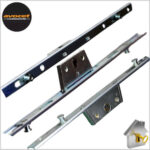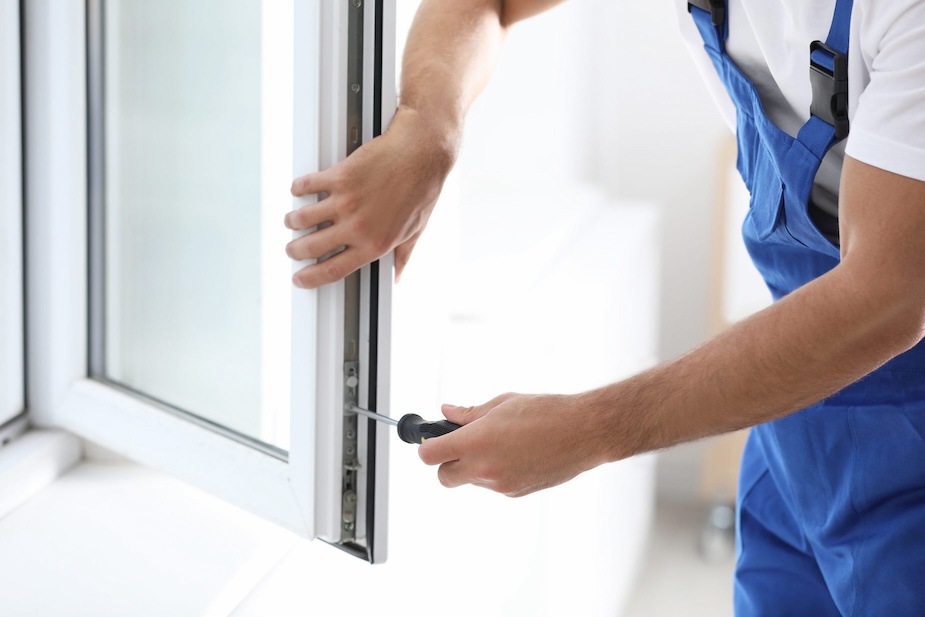You'll Never Guess This Upvc Door Locking Mechanism Replacement's Tric…
페이지 정보
작성자 Marina 작성일25-01-29 12:06 조회6회 댓글0건관련링크
본문
 Upvc Door Locking Mechanism Replacement - DIY Or Call in a Professional?
Upvc Door Locking Mechanism Replacement - DIY Or Call in a Professional?The door lock is a crucial piece of security in your home. It can be a hassle to enter your home if the lock is damaged or is no longer working.
It is simple to replace a multipoint locking mechanism on the door made of upvc. It is recommended to buy a replacement lock made by the same manufacturer to ensure it fits.
Fixing a stuck locking cylinder
A functional door lock is an essential part of protecting your home and its contents secure. It can be a headache and even dangerous if it fails to work. There are simple steps that you can follow to fix this problem. Lubricant can be used to free the cylinder from. You can now open and close uPVC composite door replacement lock without worrying about the security of your house.
The first step is to determine the uPVC door lock you are using. The lock is identified with an identification number or a brand name. You can also employ a screwdriver for the removal of the handle and then check the cylinder for this information. Once you are aware of the type of cylinder it is and what it is, you can replace the cylinder.
A gearbox that is not working properly can cause it to be difficult to push the handle down. This could be the result of wear and tear or damage. A professional locksmith can repair this problem for you.
It's an excellent idea to check your uPVC doors and windows for signs of wear and tear. This will allow you to have a door that is safe and reliable, and will help you spot issues before they get worse. This will help you save money on repairs.
It's a good idea to study the instructions from the manufacturer and then gather the necessary tools prior to begin any repairs. This will allow you to learn how the system functions and make the repair process much easier. You may need an hammer, wrench, screwdriver, drill and hammer. Wearing gloves when working is important to protect yourself from injuries caused by sharp edges.
After you have finished, you should also test the cylinder. You can test it by inserting the key, then turning it. Make sure that the tongue is properly inserted into the cylinder and that the key is compatible with the door you want to. You can use a spirit-level to check the alignment of the cylinder in relation to the hinges.
Changing your uPVC lock's mechanism might appear daunting initially however, it's an simple task that you can do it yourself, without the necessity of locksmith. After you've replaced your uPVC lock, it's important to test the handle and cylinder for any problems.
Adjusting the keep
Anyone with basic DIY handyman abilities can do this task. If you're not a seasoned locksmith, it's best to have a professional do the job for you. This will ensure you receive the results you want and also prevent any unnecessary damage to your frame or replacing patio door lock.
Before you begin the repair process, it is important to consult your manufacturer's instructions for any specific guidelines regarding the repair of your uPVC lock. Gather the tools and materials you'll need to complete the project. In addition, make sure that you're safe to work by putting the doorstop or a block wood beneath your door to ensure it is stable while you are working.
Depending on the root of the issue You may have to take apart a part of your door's hardware in order to inspect the mechanism. In this case it is essential that you choose an approved lubricant by the manufacturer. This lubricant shouldn't attract dust or dirt. It is recommended that you lubricate the internal hinges of your door every six months or earlier in the event that you notice they are becoming stiff.
There are many reasons your uPVC doors might be causing a sticking. It could be that the door isn't aligned correctly. This is a common problem in older doors. Weather changes can cause the door to expand or contraction. This could cause the lock to become stuck.
It is possible that the gearbox may be malfunctioning if the handle does not lift the latch to lock the doors. This is a relatively simple fix for most homes. This is not a solution for doors that have been struck or kicked, as the uPVC handles are unlikely to be able to withstand such a force.
If you have a key, and open the door, then check how far the handle is elevated in relation to the hinge. If the gap is too wide, it's an indication that the gearbox has broken or worn out.
Replace the handle or lever
Changing your upvc door lock may seem like an overwhelming task at first, but it's not as difficult as you might think. Utilizing simple tools and the right information will help you get the job done in no time. You could also save money by doing the work yourself instead of hiring a professional locksmith. The biggest question is whether you should DIY or hire a professional? It's a great idea to learn new techniques and save money by doing the work yourself. However when the project transforms into Thor's Hammer meeting Ragnarok and Ragnarok, it could be better to engage a professional.
If the handle on your upvc door is loose or floppy after the key has been inserted it is a sign that internal mechanisms are beginning to fail. This is usually due to the gearbox getting worn out. It can be costly however a professional locksmith will replace the gearbox to ensure that your upvc will work correctly.
The most frequent issue with door handles made of upvc is that they can't be raised to lock the door when it is closed. This may be caused by the cylinder lock as well as the handle or the locking mechanism itself. The key is typically put in at an angle to the keyhole and then turned to unlock the lock. However, this may be difficult if the handle is too loose or sloppy.
This could be a sign of a worn cylinder or a damaged locking rod. The easiest solution is to lubricate the lock barrel and ensure that it's in alignment with the handle. You can use lubricants like graphite and WD-40, or a specialized lubricant specifically designed for multipoint mechanisms. Regularly lubrication can stop your Upvc locks from becoming stiff and help keep them functioning correctly for longer. It is recommended to do this every six months to maintain the smooth operation. Use a lubricant with PTFE to prevent dirt and grime from clogging up the mechanism. This will allow you to turn and lock the handle.
Fixing a mechanism for sticking
Door lock mechanisms made of uPVC require regular maintenance to ensure that they function smoothly and reliably. If they aren't maintained properly, they may become stiff or jammed. This can result in the loss of security. There are ways to fix the issue before it escalates into major repairs or a total failure of the system. The key to success is to identify the underlying cause and address it quickly.
One of the most frequent reasons for a lock mechanism that is stiff is dirt or debris. This could cause the handle or latch to get stuck inside its housing. Fortunately, this is an easy problem to find and fix. Just place a flathead screwdriver beneath any hinge cover caps sticking out of the composite door replacement lock's side and pop them off to expose the ends of the hinge pins. Tap each pin with a hammer to lift them out of the barrels of the hinges. The door handle that is damaged or locking mechanism will now be able to move.
A misalignment of the frame and door could also cause stuck uPVC. This can be caused by a change in weather that causes the door to expand or shrink. It's a good thing to apply a lubricant onto the inside of your lock every six months. Use a graphite-based lubricant that doesn't attract dust like petroleum-based lubricants.
If you are unable to fix the issue by either altering or replacing lock on upvc door the handle or lever it could be necessary to replace the entire locking mechanism. Luckily, this is an easy task that can be accomplished by most homeowners. Before beginning, it's a good idea to refer to the manual for your particular lock manufacturer for specific instructions on your particular lock, and to gather all of the necessary tools and spare parts prior to beginning. It's also crucial to place an obstruction like a doorstop or block of wood under the door lock replacement to keep it steady as you work.
 Make sure you identify the manufacturer prior to remove the old lock. Look for the brand name or logo on the handle's faceplate. This will make it easier to locate locks that match the design of the original.
Make sure you identify the manufacturer prior to remove the old lock. Look for the brand name or logo on the handle's faceplate. This will make it easier to locate locks that match the design of the original.Warning: Use of undefined constant php - assumed 'php' (this will throw an Error in a future version of PHP) in /data/www/kacu.hbni.co.kr/dev/skin/board/basic/view.skin.php on line 152
댓글목록
등록된 댓글이 없습니다.

